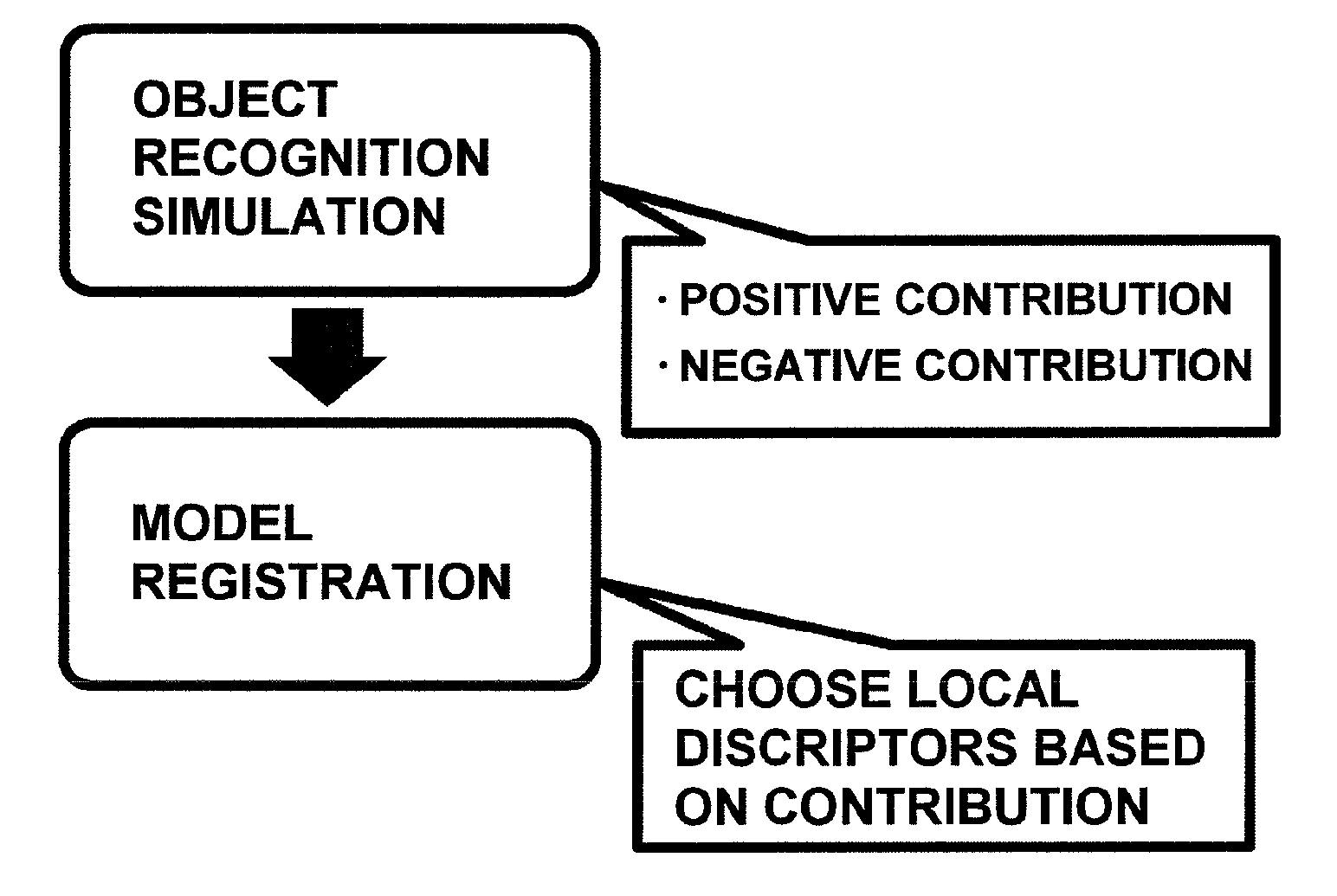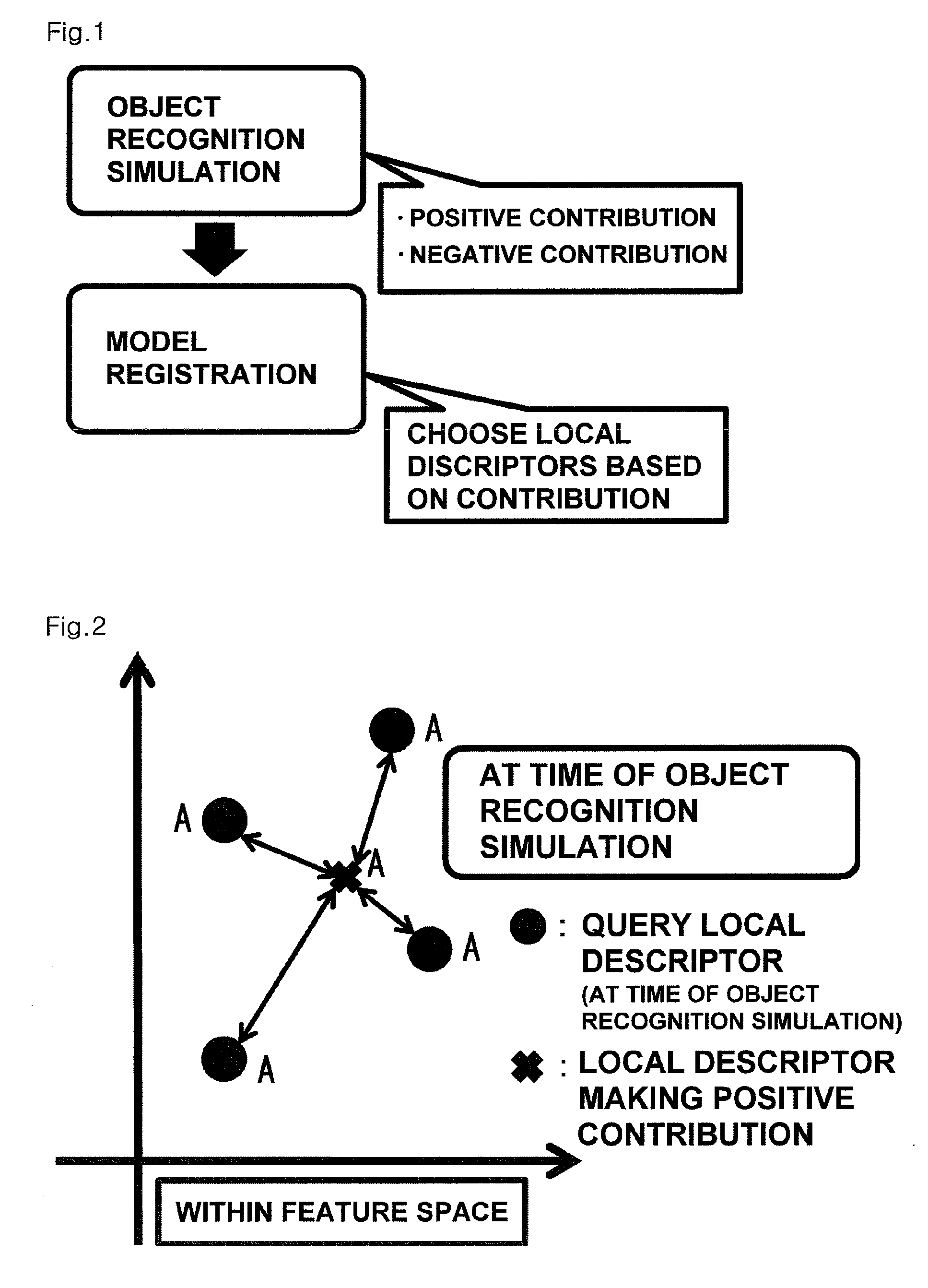Method of compiling three-dimensional object identifying image database, processing apparatus and processing program
a three-dimensional object and image database technology, applied in the field of three-dimensional object identification image database, can solve the problems of reducing the memory size of models, difficult to perform large-scale object recognition, and taking immense time to perform local descriptor matching, etc., to achieve high-accuracy object recognition, improve the recognition rate, and reduce the recognition rate
- Summary
- Abstract
- Description
- Claims
- Application Information
AI Technical Summary
Benefits of technology
Problems solved by technology
Method used
Image
Examples
embodiment
[0049]1. Outline
[0050]FIG. 1 is a diagram illustrating a flow of model storing processing according to the present invention. Local descriptors include such local descriptors that improve the recognition rate of object recognition when they are stored in models, and such local descriptors that lower the recognition rate. In the present invention, in order to analyze how the local descriptors change the recognition rate, an object recognition simulation will be performed using images for model construction. In the object recognition simulation of the present invention, if local descriptors contribute to the object recognition in a manner as to improve the recognition rate, such a contribution is called “positive contribution”, whereas if local descriptors contribute to the object recognition in a manner as to lower the recognition rate, such a contribution is called “negative contribution”.
[0051]Some local descriptors positively contribute to recognition of many images. It is conside...
PUM
 Login to View More
Login to View More Abstract
Description
Claims
Application Information
 Login to View More
Login to View More - R&D
- Intellectual Property
- Life Sciences
- Materials
- Tech Scout
- Unparalleled Data Quality
- Higher Quality Content
- 60% Fewer Hallucinations
Browse by: Latest US Patents, China's latest patents, Technical Efficacy Thesaurus, Application Domain, Technology Topic, Popular Technical Reports.
© 2025 PatSnap. All rights reserved.Legal|Privacy policy|Modern Slavery Act Transparency Statement|Sitemap|About US| Contact US: help@patsnap.com



